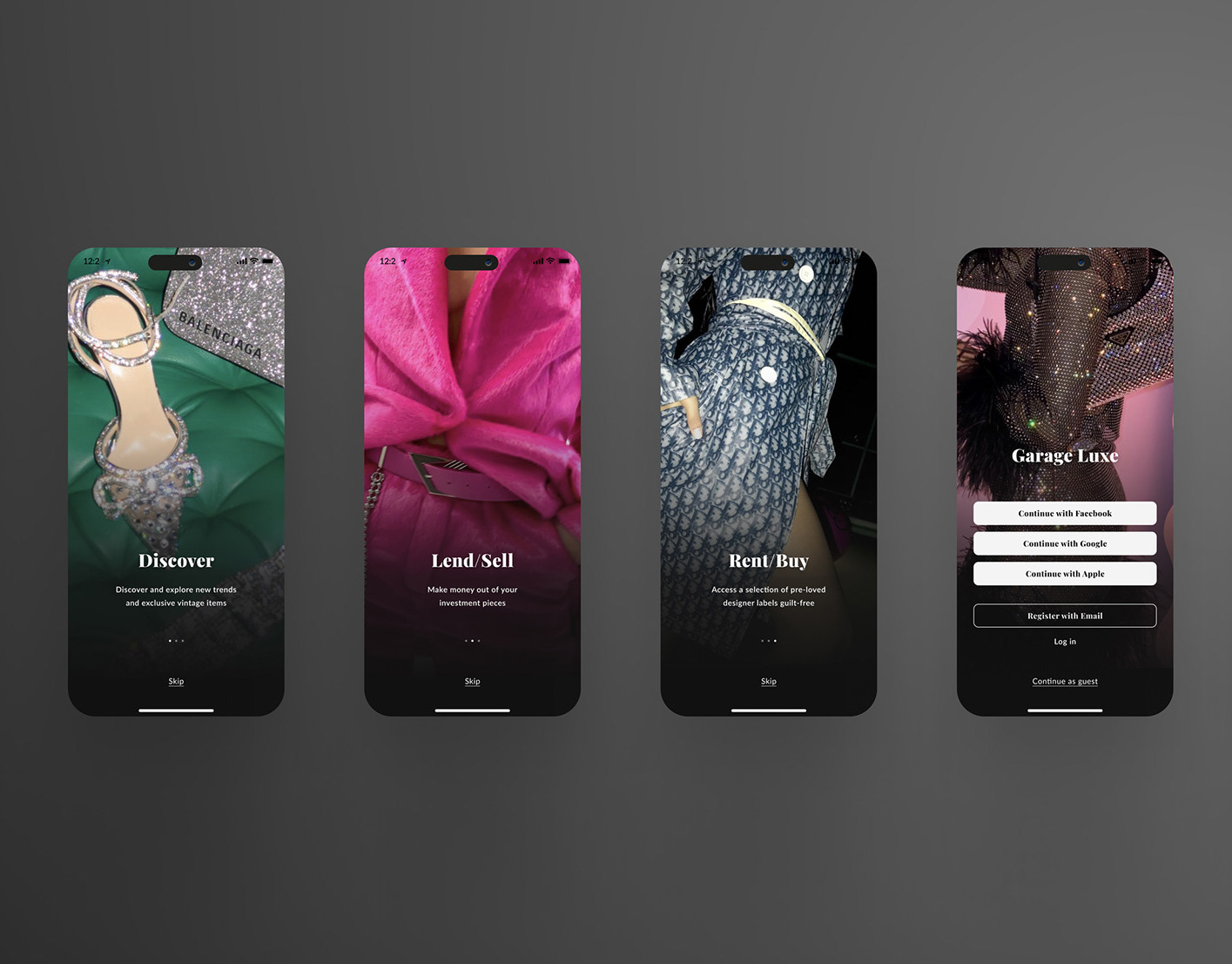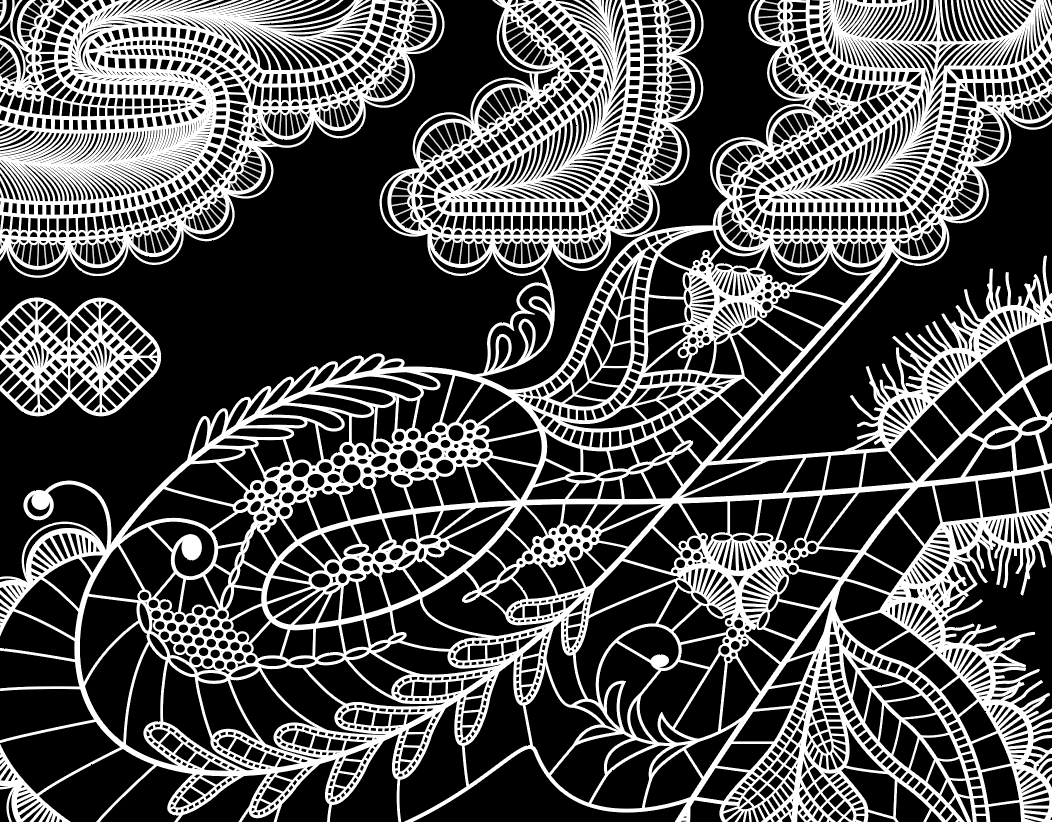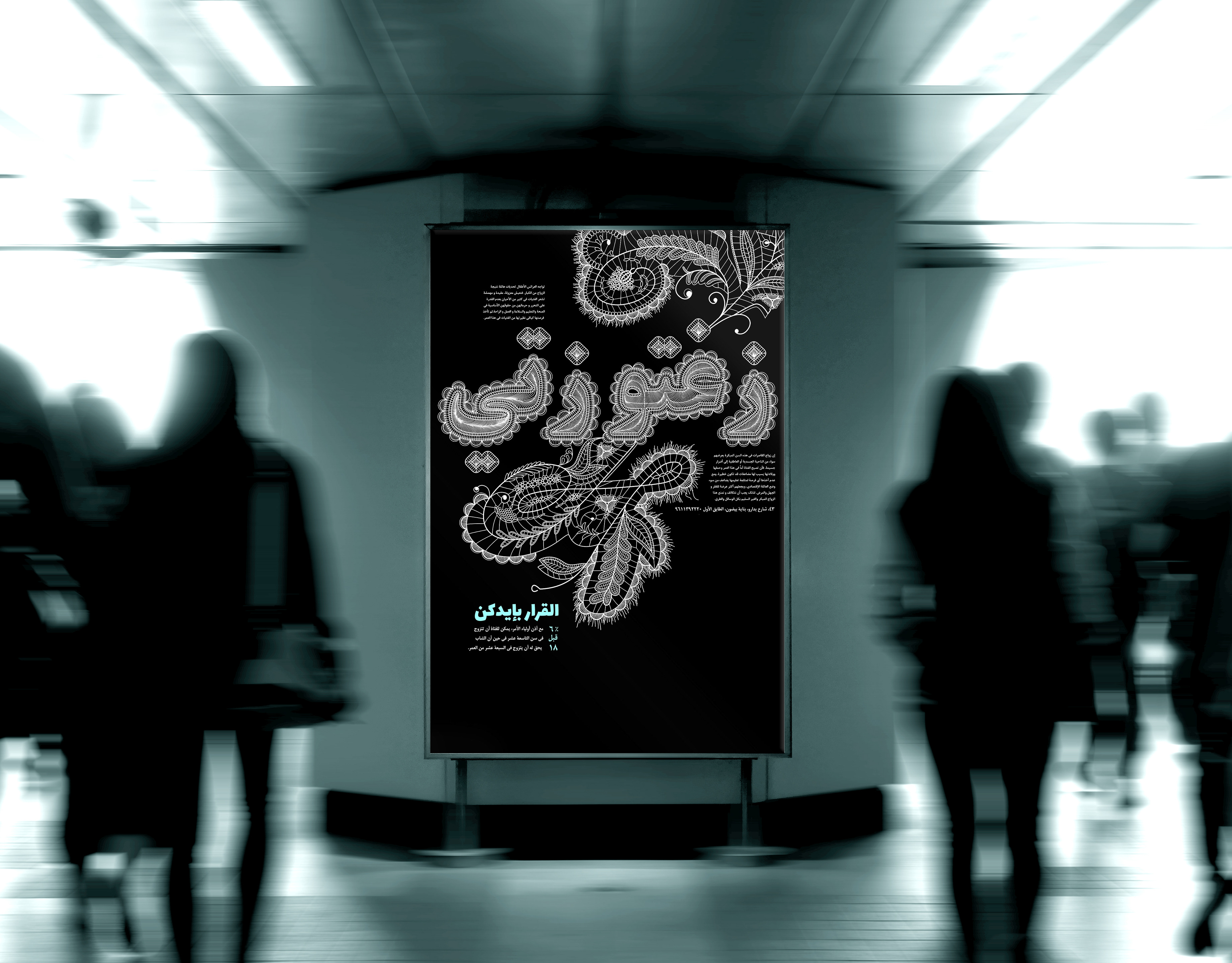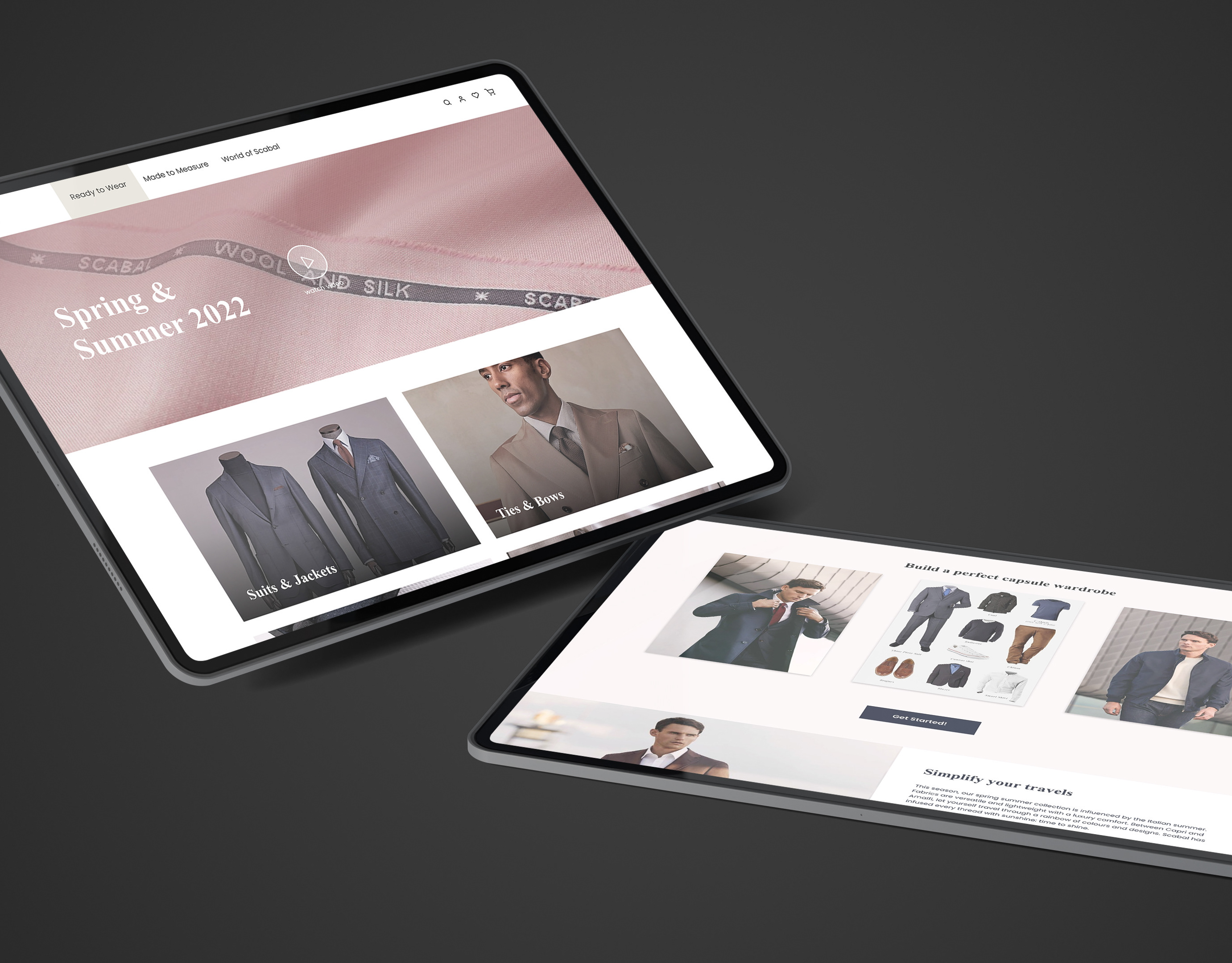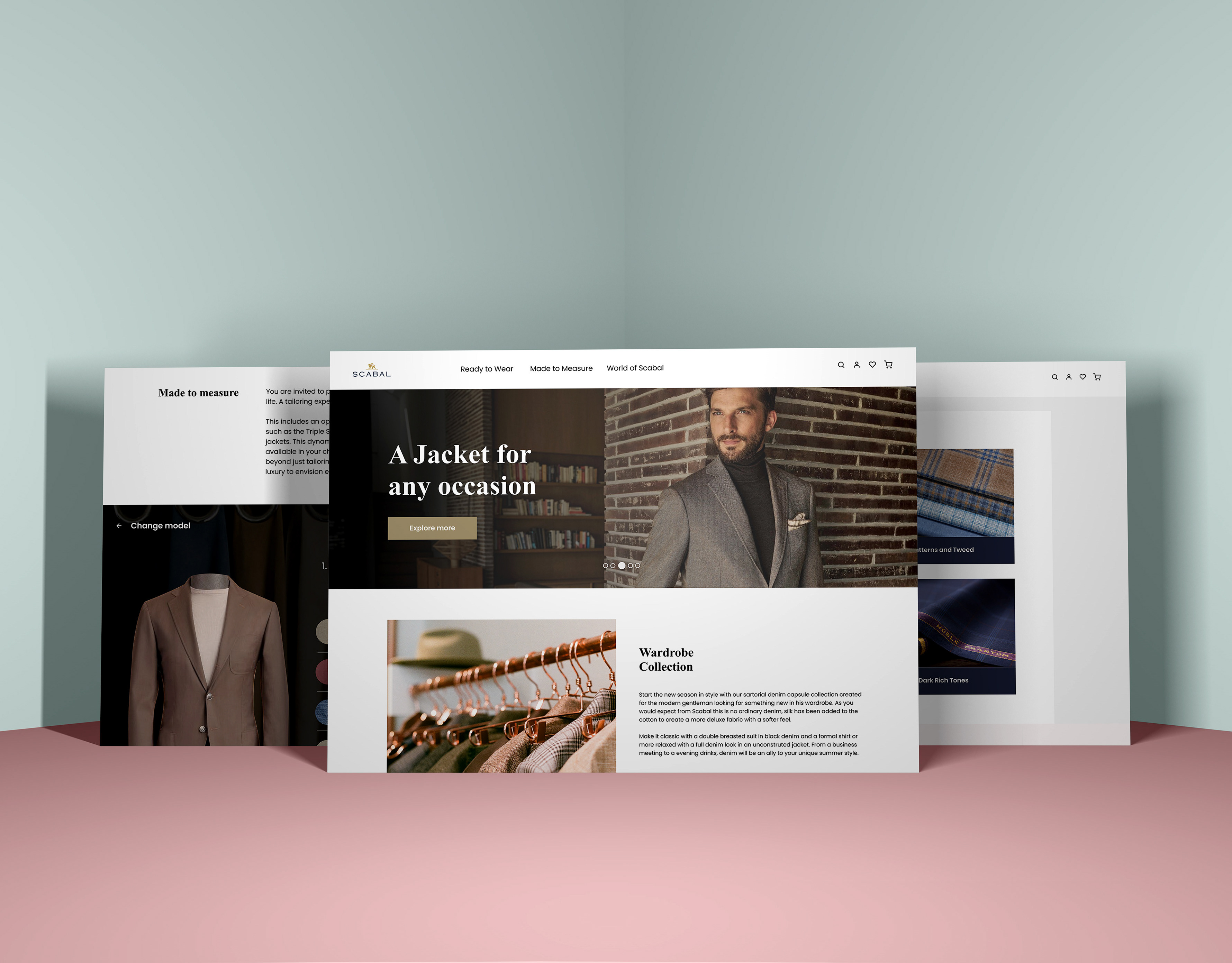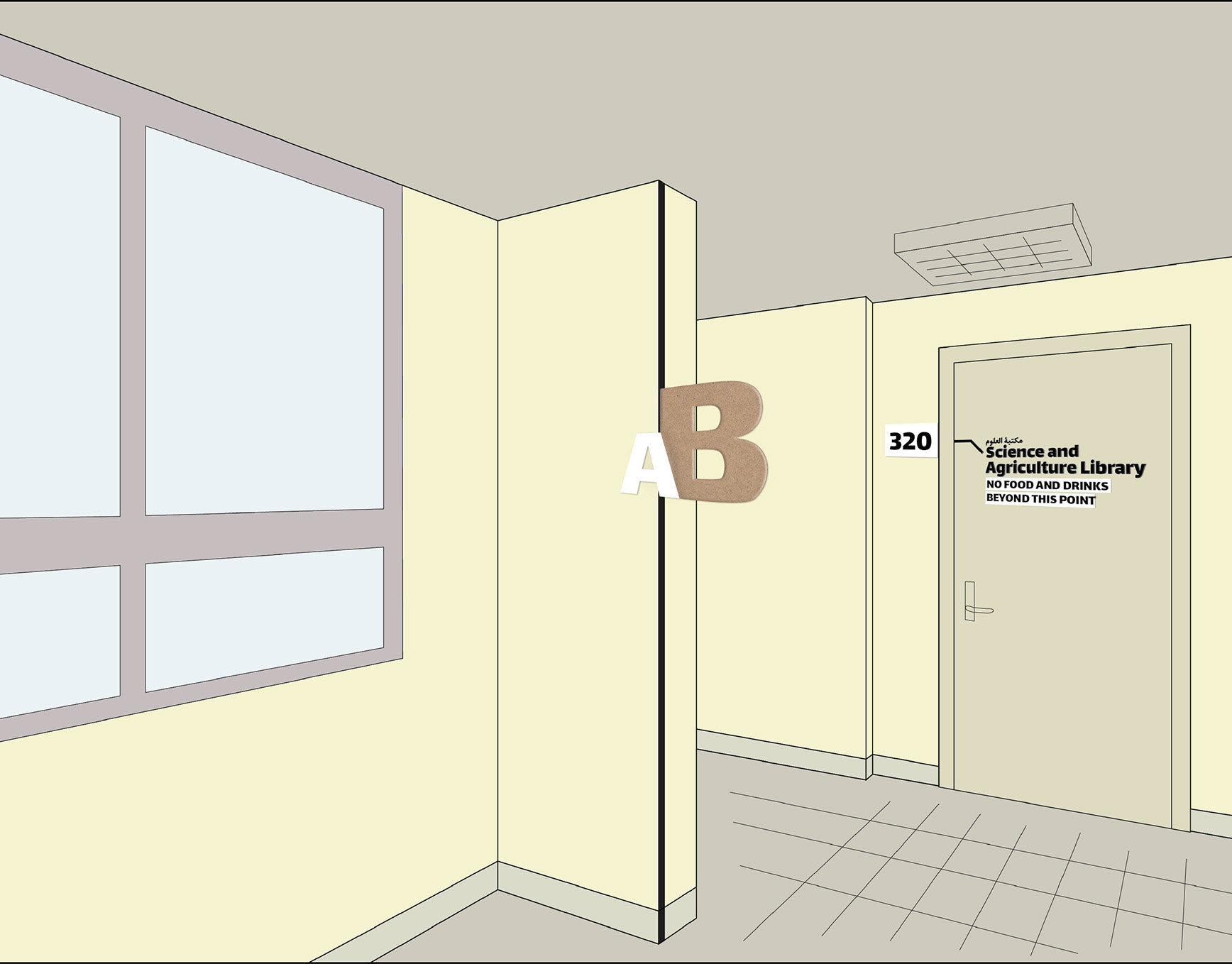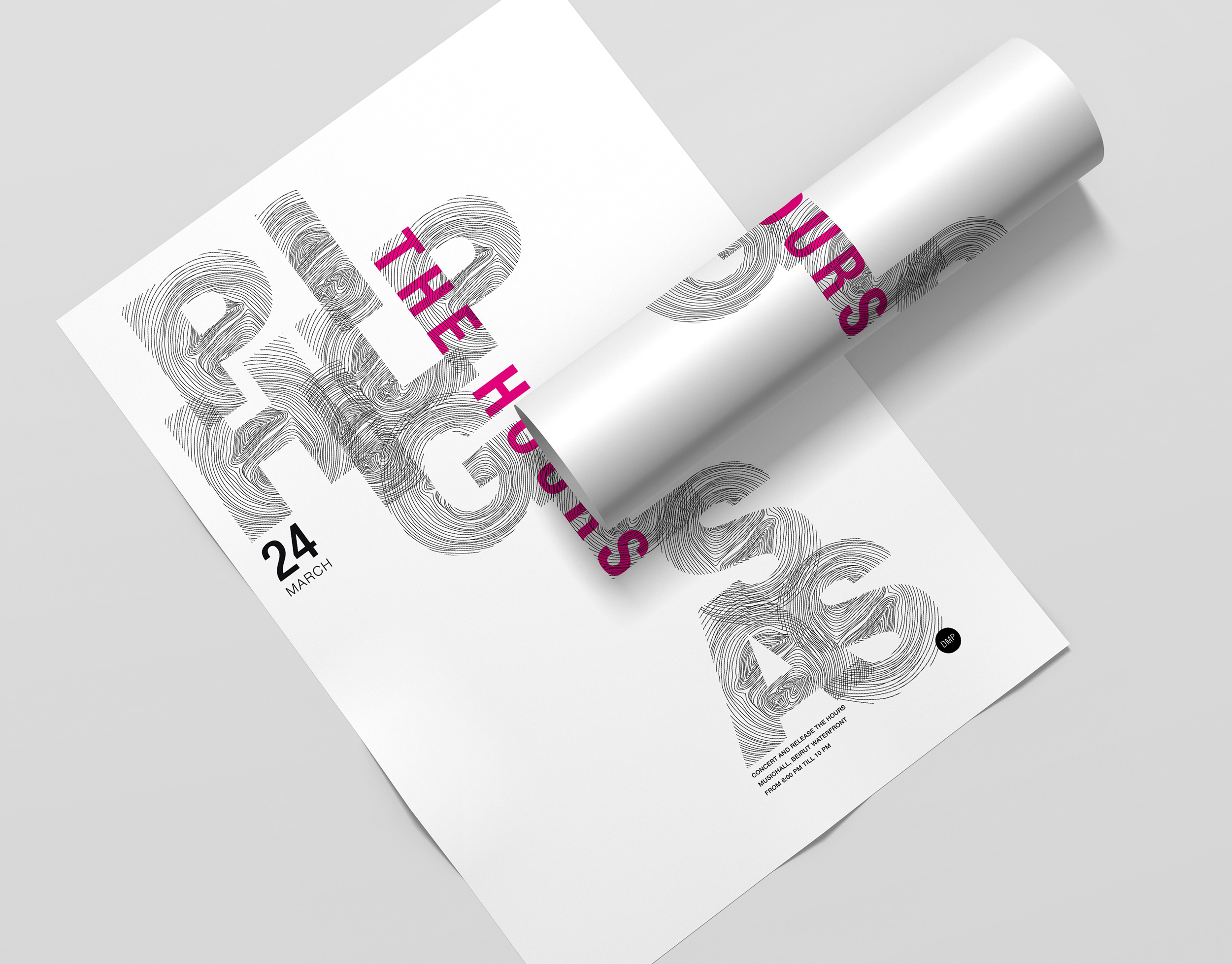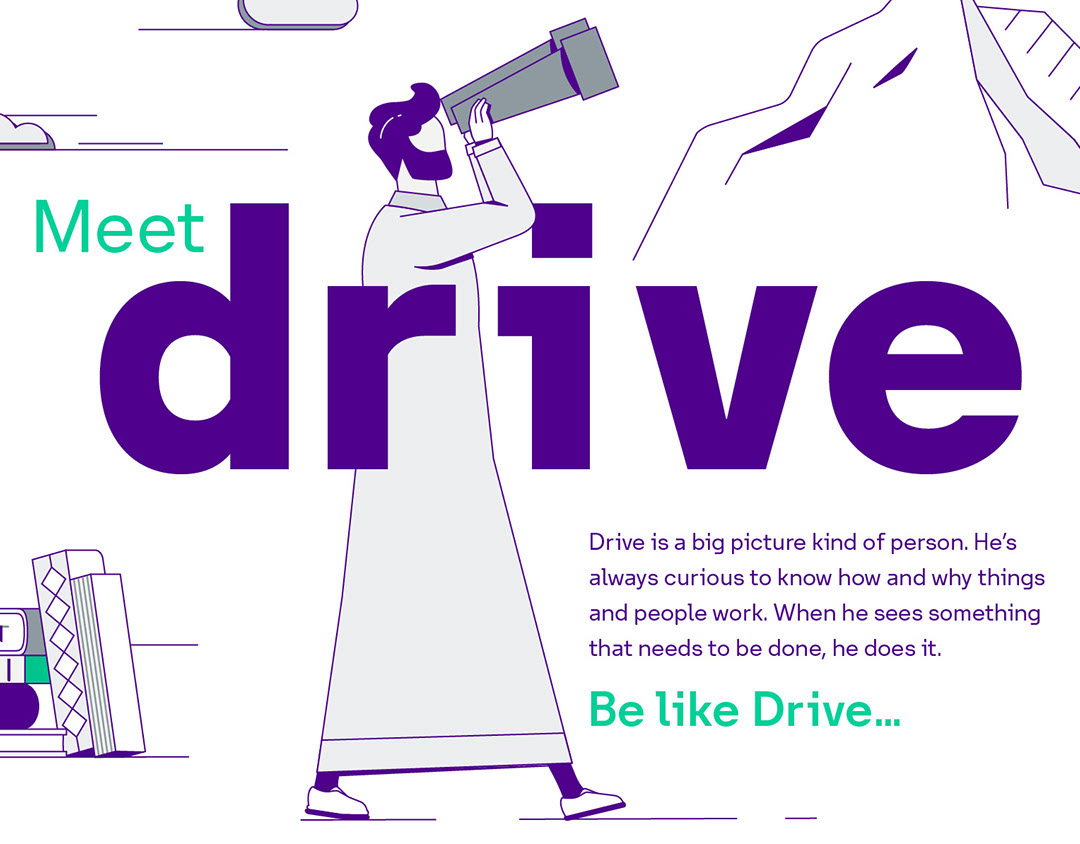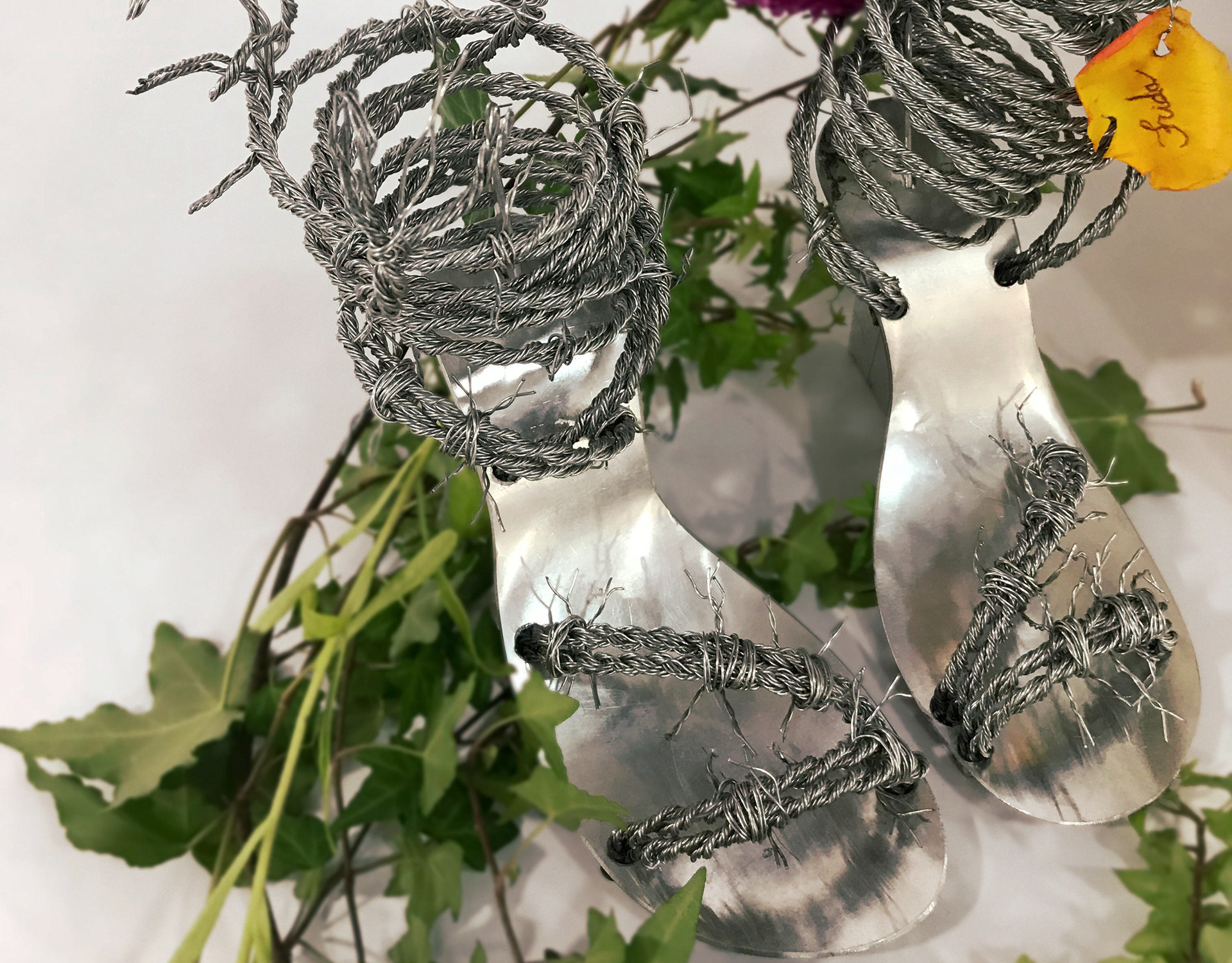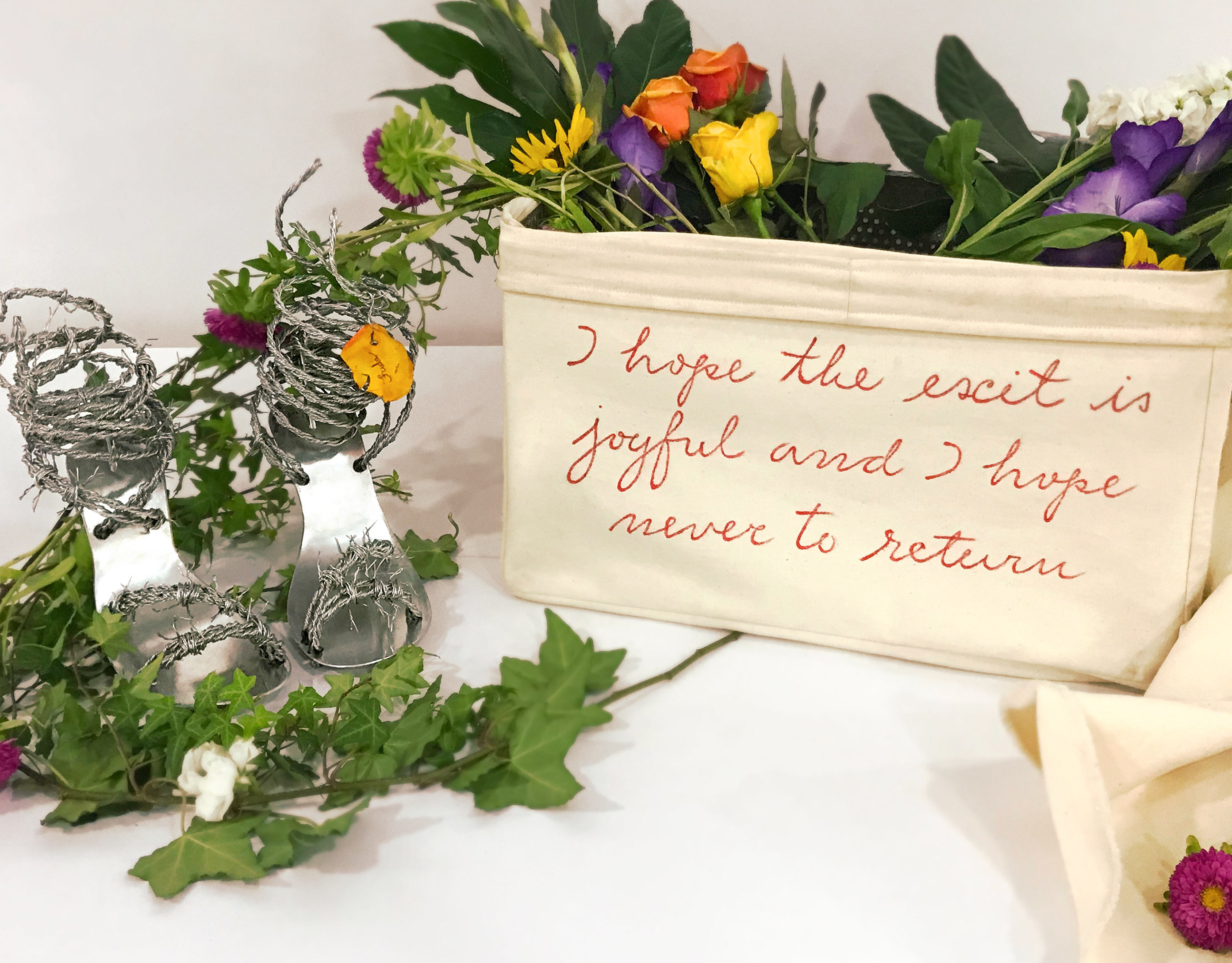01/ This Project
01.01/ Problem Statement
Smart wearables like “Nudge” and “Keen” have been designed to build awareness of body focused repetitive behaviours (BFRBs) by emitting a subtle vibration when a motion related to this behaviour is detected. However, mental health assistance is not a “one-size-fits-all”. People’s different experiences, environments and backgrounds greatly shape the way they respond to psychological treatments and approaches. How might we create a tool that will deter our users from engaging in unwanted behaviours (hair-pulling) catering to their distinct needs?
01.02/ Aim
The aim is to design an app linked to a smart wearable to improve the lives of people suffering from trichotillomania through personalised interventions to deter the user from performing unwanted behaviours.
01.03/ Brief Description
The focus is on providing a personalized experience; users will manually log data on the app about their preferences, likes and dislikes. When a certain physiological change related to the user’s condition is perceived by the wearable, a specific intervention will take place through the app. Through AI and a myriad of sensors, the app will learn the patterns. The product will solve users’ needs by bringing awareness to subconscious hair pulling behaviours inviting them to redirect their attention into engaging in more productive habits.
02/ Methodology
Lean UX, an agile, rapid and iterative method was used in this project. It relies on 3 main pillars: Think, Make and Check.
Learn UX Canvas
02.01/ Think
Think consists of formulating assumptions about any problem or idea that will be turned into a hypothesis to better identify the context for testing.
Below are some of the assumptions formulated:
· The users are individuals suffering from trichotillomania who are looking for holistic approaches to help battle this disorder.
· The product can be used in various contexts whether it’s at home watching TV or using the computer, or even at work- a setting where the user would typically be prone to engage in this behaviour.
· The product will solve users’ needs by bringing awareness to subconscious hair pulling behaviours inviting them to redirect their attention into engaging in more productive habits.
The assumptions were prioritised based on the severity of the consequences in case the assumption is wrong. The ones presenting the most risks and unknowns were the ones tested. Thus, a priority matrix displaying the risk in relation to the level of understanding was necessary to create this classification.
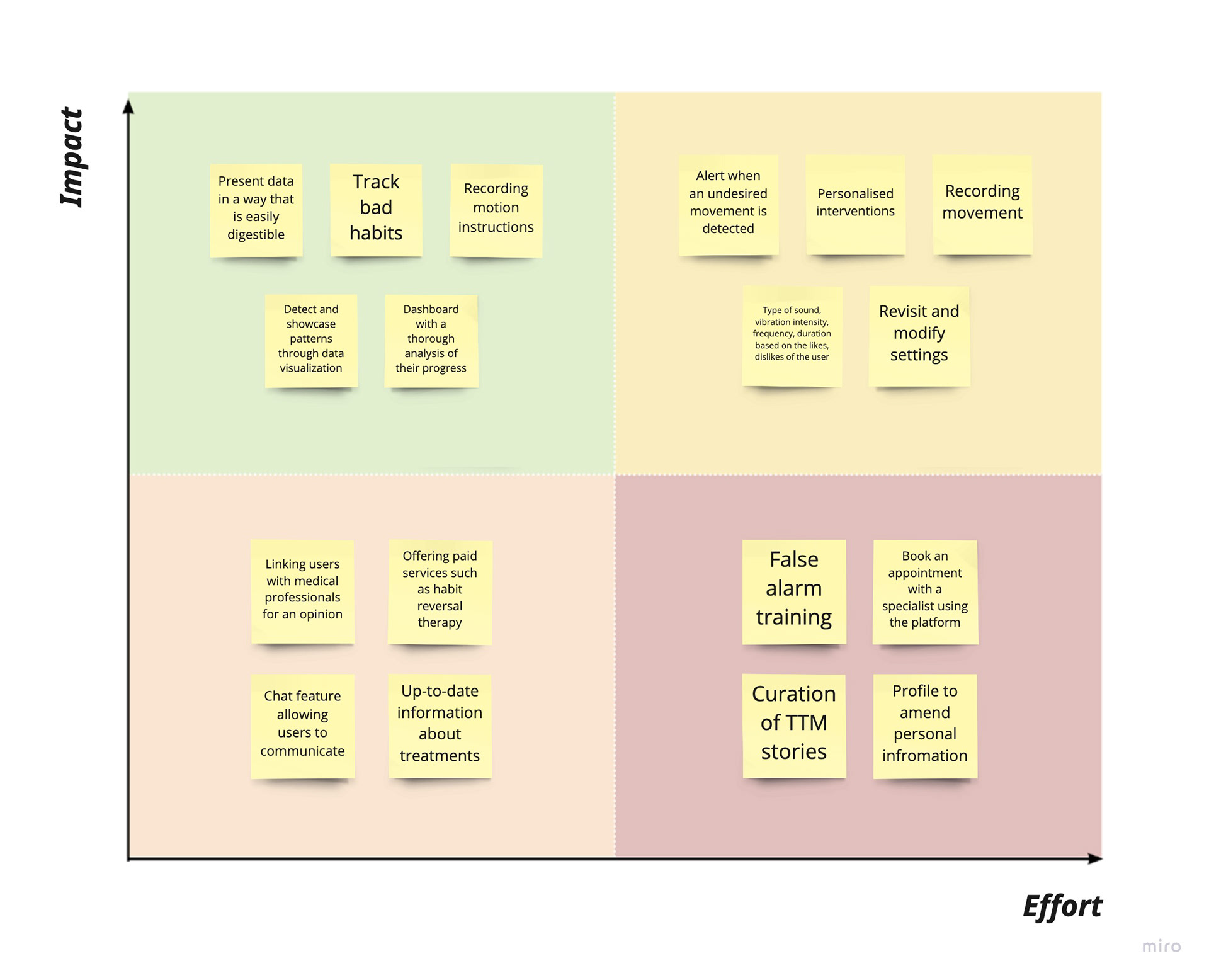
Assumption Priority Matrix
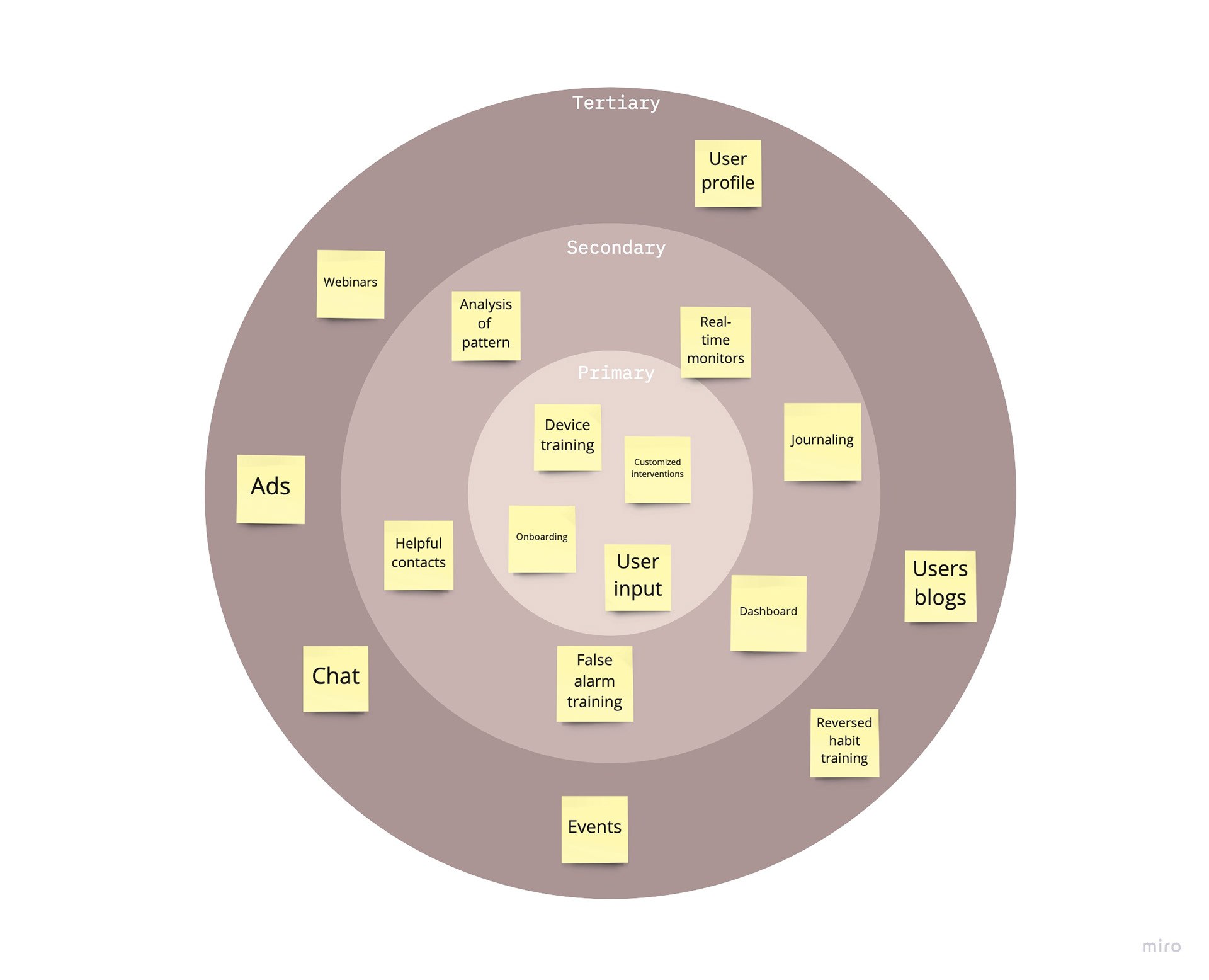
Bull-Eye Chart
Two hypotheses were created:
· We believe that the user will stop pulling their hair if they can gain awareness about their unwanted behaviour and decide to replace it with more productive and efficient coping mechanisms. The user will attain this benefit with the help of personalised, user-regulated interventions (vibration, notification and/or sound) they will experience every time the wearable they trained detects a “hair scanning” motion.
· We believe that the user will enhance their therapeutic journey if they can detect patterns of their pulling urges and behaviours through the dashboard. The user will attain this benefit by manually inputting information in relation to pulling episodes in addition to data collected by the wearable (motion, heart rate, etc) through machine learning modalities.
Closed card sorting was conducted prior to creating the information architecture of the platform in order to understand embedded mental models users have.
Card Sorting
02.02/ Make
The information architecture was derived from the card sorting results which dictated the basis of the flow.
Information Architecture
Styleguide
Training the device to detect the hair pulling motion by recording the gesture through a variety of sensing modalities.
Personalised and greatly customizable interventions in the form of vibrations, sound and/or notification that are specific to each user and compatible with their preferences.
An elaborate dashboard of data visualised with graphs where users can monitor and reflect on the frequency, intensity and patterns of their hair pulling episodes
A home-page providing users with up-to-date information about treatments built-into the app but also out-sourced help with professionals in the field.
A manual logging allows users to document episodes that have occurred when they weren’t connected to the smart wearable for more accurate data analysis.
02.03/ Check
A five act interview was conducted on three participants to test the service.
· Users were satisfied with the degree of customization of the interventions. They suggested integrating additional types of interventions based on deeper user research.
· They also claimed they would like to learn more about the Habit Reversal training and how it will be incorporated in the service.






